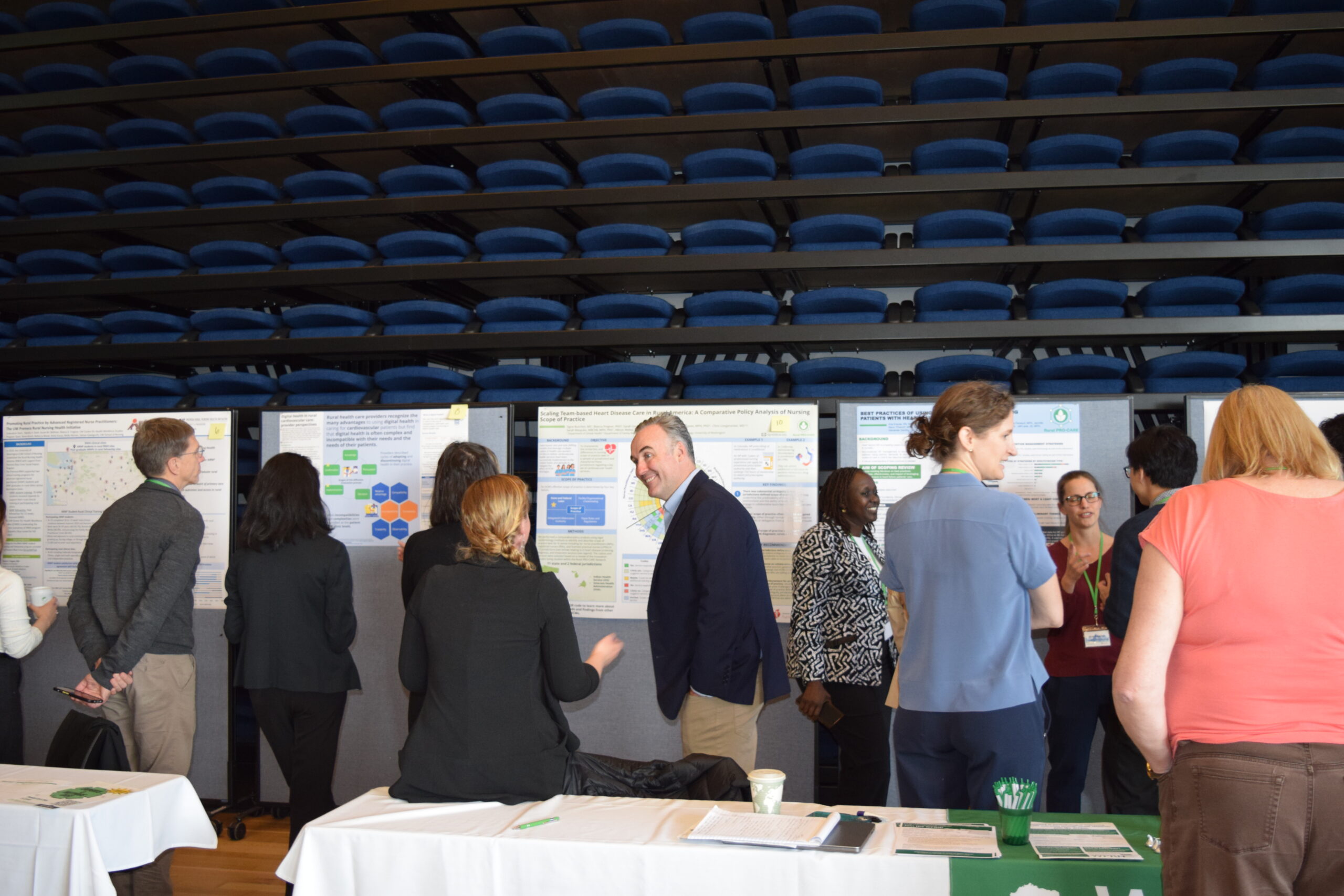
Therapies that are sensitive to multiple biomarkers could allow medicines to reach only the areas of the body where they are needed. The diagram above shows three theoretical biomarkers that are present in specific, sometimes overlapping areas of the body. A therapy designed to find the unique area of overlap between the three will act on only that area.DeForest et al./Nature Chemical Biology
Targeted drug delivery is a powerful and promising area of medicine. Therapies that pinpoint the exact areas of the body where they’re needed — and nowhere they’re not — can reduce the medicine dosage and avoid potentially harmful “off target” effects elsewhere in the body. A targeted immunotherapy, for example, might seek out cancerous tissues and activate immune cells to fight the disease only in those tissues.
The tricky part is making a therapy truly “smart,” where the medicine can move freely through the body and decide which areas to target.
Researchers at the University of Washington took a significant step toward that goal by designing proteins with autonomous decision-making capabilities. In a proof-of-principles study published Oct. 9 in Nature Chemical Biology, researchers demonstrated that by adding smart tail structures to therapeutic proteins, they could control the proteins’ localization based on the presence of specific environmental cues. These protein tails fold themselves into preprogrammed shapes that define how they react to different combinations of cues. In addition, the experiment showed that the smart protein tails could be attached to a carrier material for delivery to living cells.
Advances in synthetic biology also allowed the researchers to manufacture these proteins cheaply and in a matter of days instead of months.
“We’ve been thinking about these concepts for some time but have struggled with ways to increase and automate production,” said senior author Cole DeForest, a UW professor of chemical engineering and bioengineering. “We’ve now finally figured out how to produce these systems faster, at scale and with dramatically enhanced logical complexity. We are excited about how these will lead to more sophisticated and scalable disease-honing therapies.”
The concept of programmable biomaterials isn’t new. Scientists have developed numerous strategies to make systems responsive to individual cues — such as pH levels or the presence of specific enzymes — that are associated with a particular disease or area of the body. But it’s rare to find one cue, or “biomarker,” that’s unique to one spot, so a material that hones in on just one biomarker might act on a few unintended places in addition to the target.
One solution to this problem is to seek out a combination of biomarkers. There might be many areas of the body with particular enzyme or pH levels, but there are likely fewer areas with both of those factors. In theory, the more biomarkers a material can identify, the more finely targeted drug delivery can be.
In 2018, DeForest’s lab created a new class of materials that responded to multiple biomarkers using Boolean logic, a concept traditionally used in computer programming.

The diagrams above show linker structures that can perform different logical operations. In box 1, the protein therapeutic (star) is released from a material (pink wedge) in the presence of either biomarker X or Y; in box 2, the protein will release only if both biomarkers X and Y are present.DeForest et al./Nature Chemical Biology
“We realized that we could program how therapeutics were released based simply on how they were connected to a carrier material,” DeForest said. “For example, if we linked a therapeutic cargo to a material via two degradable groups connected in series — that is, each after the other — it would be released if either group was degraded, acting as an OR gate. When the degradable groups were instead connected in parallel — that is, each on a different half of a cycle — both groups had to be degraded for cargo release, functioning as an AND gate. Excitingly, by combining these basic gates we could readily create advanced logical circuits.”
It was a big step forward, but it wasn’t scalable — the team built these large and complex logic-responsive materials manually through traditional organic chemistry.
But over the next several years, the related field of synthetic biology advanced by leaps and bounds.
“The field has developed exciting new protein-based tools that can allow researchers to form permanent bonds between proteins,” said co-first author Murial Ross, a UW doctoral student of bioengineering. “It opened doors for new protein structures that were previously unachievable, which made more complex logical operations possible.”
Additionally, it became practical to use living cells as factories to produce these complex proteins, allowing scientists to design custom DNA blueprints for new proteins, insert the DNA into bacteria or other host cells, and then collect the proteins with the desired structure directly from the cells.
With these new tools, DeForest and his team streamlined and improved many steps of the process at once. They designed and produced proteins with tails that spontaneously fold into more bespoke shapes, creating complex “circuits” that can respond to up to five different biomarkers. These new proteins can attach to various carriers — hydrogels, tiny beads or living cells — for delivery to a cell, or theoretically a disease site. The team even loaded up one carrier with three different proteins, each programmed to deliver their unique cargo based on different sets of environmental cues.

The research team designed protein tails that fold into custom shapes to create sophisticated logical circuits. Box 1 shows a protein designed to be responsive to five different biomarkers; box 2 shows the logical conditions that must be met to fully break apart the tail and release the protein.DeForest et al./Nature Chemical Biology
“We were so excited about the results,” DeForest said. “Using the old process, it would take months to synthesize just a few milligrams of each of these materials. Now it takes us a couple of weeks to go from construct design to product. It’s been a complete game changer for us.”
“The sky’s the limit. You can create delayed and independent delivery of many different components in one treatment,” Ross said. “And I think we could create much, much larger logical circuits that a protein can be responsive to. We’re at the point now that the technology is outpacing what we’ve seriously considered in terms of applications, which is a great place to be.”
The researchers will now continue searching for more biomarkers that proteins could target. They also hope to start collaborating with other labs at the UW and beyond to build and deploy real-world therapies.
The team outlined other uses for the technology as well. The same tools could manufacture therapies within a single cell and direct them to specific regions, a sort of microcosm of how the process works in the body. DeForest also envisions diagnostic tools like blood tests that could, say, turn a certain color when a complex set of cues within the blood sample are present.
DeForest thinks the first practical applications are likely to be cancer treatments, but with more research, the possibilities feel endless.
“The dream is to be able to pick any arbitrary location inside of the body — down to individual cells — and program a material to go and act there,” he said. “That’s a tall order, but with these technologies we’re getting closer. With the right combination of biomarkers, these materials will just get more and more precise.”
Co-authors include Annabella Li, a former UW undergraduate student of chemical engineering; Shivani Kottantharayil, a UW undergraduate student of bioengineering; and Jack Hoye, a UW doctoral student of chemical engineering.
This research was funded by the National Science Foundation and the National Institutes of Health.
For more information, contact DeForest at profcole@uw.edu.













